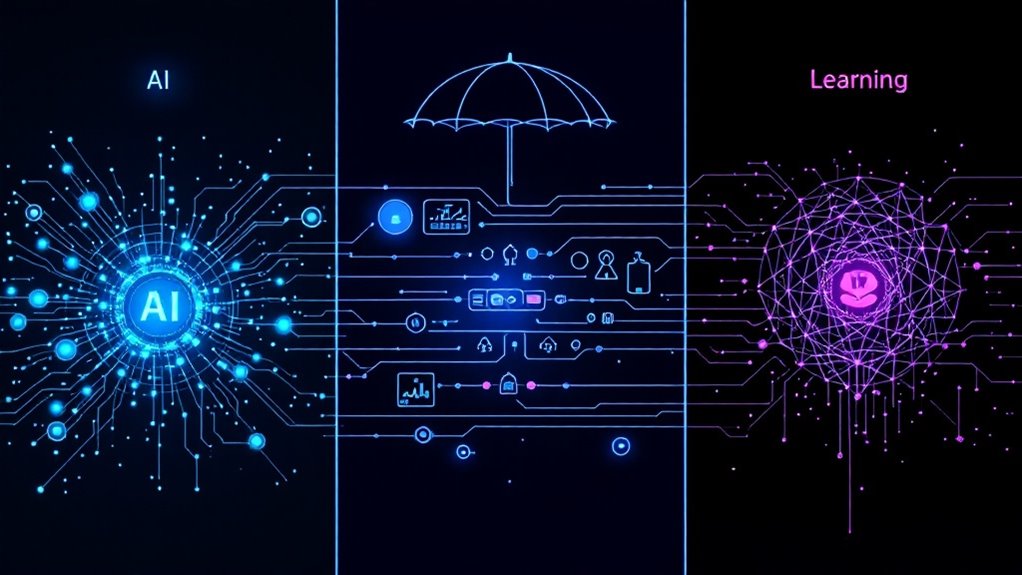No-code AI platforms offer intuitive drag-and-drop interfaces that let anyone build AI solutions without writing a single line of code. Pretty revolutionary stuff, right? Organizations see up to 62% cost reduction while small businesses can finally compete with tech giants. The tech democratizes innovation—shrinking development cycles from months to days and turning everyday employees into solution creators. McKinsey notes it could automate a third of tasks in 60% of jobs. Stick around to discover how this shift is reshaping entire industries.
While tech evangelists once insisted that coding was the new literacy everyone would need to master, no-code AI platforms are rapidly flipping that script—democratizing access to artificial intelligence in ways that would have seemed impossible just five years ago.
These platforms, armed with intuitive drag-and-drop interfaces, are allowing everyone from marketing managers to healthcare administrators to build sophisticated AI solutions without writing a single line of code. Remember when “learning to code” was the career advice du jour? Well, plot twist.
The implications for businesses are profound. Organizations report up to 62% reduction in development costs when implementing no-code tools, while simultaneously slashing time-to-market for new initiatives. Small businesses previously priced out of the AI revolution can now compete with tech giants, as the playing field levels through accessible technology.
No-code AI: where small businesses gain superpowers and billion-dollar development budgets become optional.
It’s like watching David suddenly get access to the same weapons as Goliath—except with fewer biblical consequences.
This democratization is reshaping workforces too. McKinsey notes that nearly a third of tasks across 60% of occupations could be automated, fundamentally changing job descriptions across industries. Employees are transforming from passive technology consumers to active creators, building customized solutions for problems they understand intimately. These solutions are increasingly reducing human errors while automating routine tasks that previously consumed valuable time.
The marketing team no longer waits months for IT to build that customer segmentation tool—they just make it themselves over lunch.
The ripple effects extend across healthcare, education, finance, and beyond. Doctors create patient triage systems. Teachers build personalized learning tools. Financial advisors develop client assessment applications. All without pestering the already-overworked IT department.
Perhaps most importantly, no-code AI is accelerating innovation cycles. What once took quarters now takes days. Companies test hypotheses rapidly, fail fast, and pivot quickly. These tools facilitate creating personalized workflows that integrate AI-powered tools to enhance effectiveness while reducing manual intervention. The projected growth of the global no-code AI platform market to 24.42 billion dollars by 2030 illustrates the extraordinary momentum behind this technological shift.
The traditional development bottleneck has been uncorked, letting ideas flow freely from conception to implementation.
No-code AI isn’t just changing technology—it’s changing who gets to create it. And that might be its most revolutionary aspect of all.









